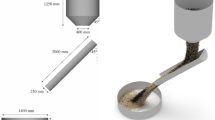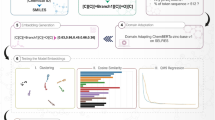Abstract
The aim of this document is to explore a unified approach to handling several of the proposed extensions to the SBML Level 3 Core specification. The approach is illustrated with reference to Simile, a modelling environment which appears to have most of the capabilities of the various SBML Level 3 package proposals which deal with model structure. Simile (http://www.simulistics.com) is a visual modelling environment for continuous systems modelling which includes the ability to handle complex disaggregation of model structure, by allowing the modeller to specify classes of object and the relationships between them.The note is organised around the 6 packages listed on the SBML Level 3 Proposals web page (http://sbml.org/Community/Wiki/SBML_Level_3_Proposals) which deal with model structure, namely comp, arrays, spatial, geom, dyn and multi. For each one, I consider how the requirements which motivated the package can be handled using Simile's unified approach. Although Simile has a declarative model-representation language (in both Prolog and XML syntax), I use Simile diagrams and equation syntax throughout, since this is more compact and readable than large chunks of XML.The conclusion is that Simile can indeed meet most of the requirements of these various packages, using a generic set of constructs - basically, the multiple-instance submodel, the concept of a relationship (association) between submodels, and array variables. This suggests the possibility of having a single SBML Level 3 extension package similar to the Simile data model, rather than a series of separate packages. Such an approach has a number of potential advantages and disadvantages compared with having the current set of discrete packages: these are discussed in this paper.
Similar content being viewed by others
Article PDF
Author information
Authors and Affiliations
Corresponding author
Rights and permissions
About this article
Cite this article
Muetzelfeldt, R. A Unified Approach for Representing Structurally-Complex Models in SBML Level 3. Nat Prec (2010). https://doi.org/10.1038/npre.2010.4372.1
Received:
Accepted:
Published:
DOI: https://doi.org/10.1038/npre.2010.4372.1



